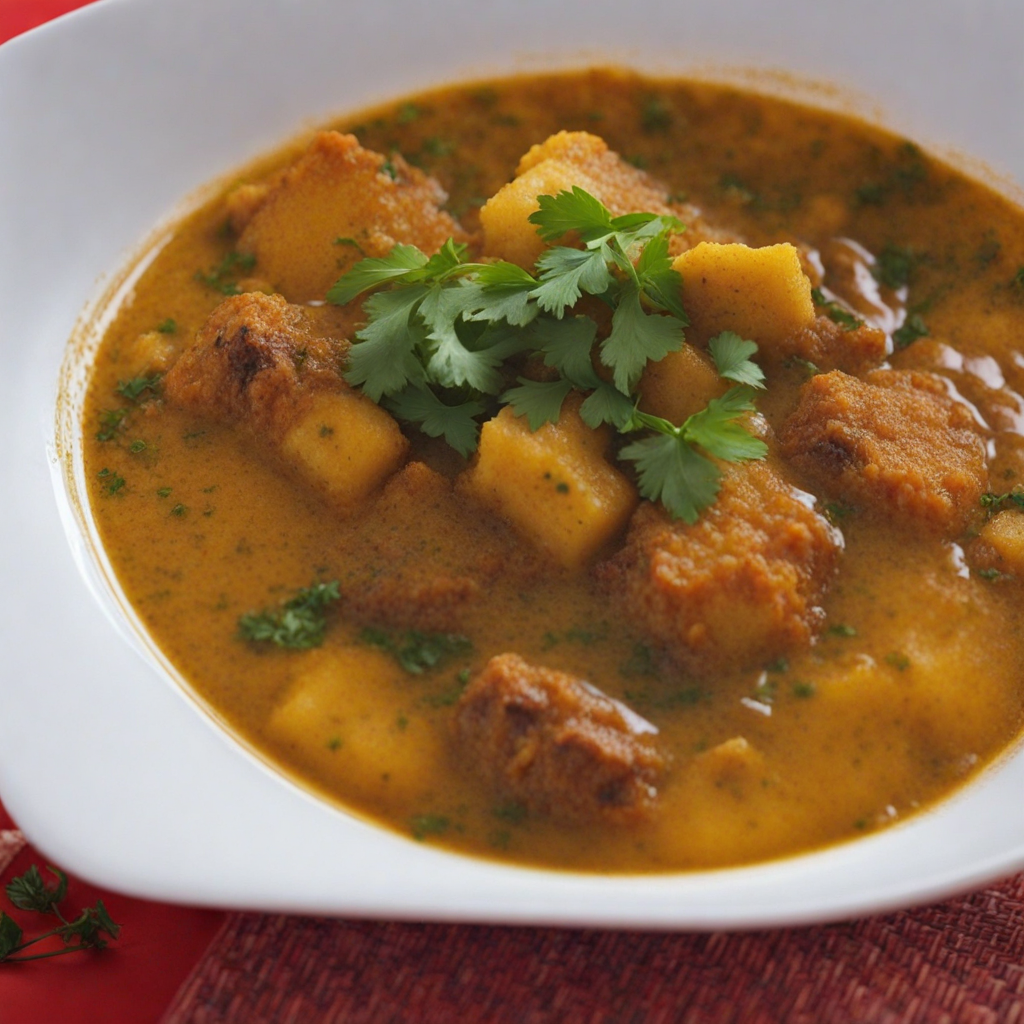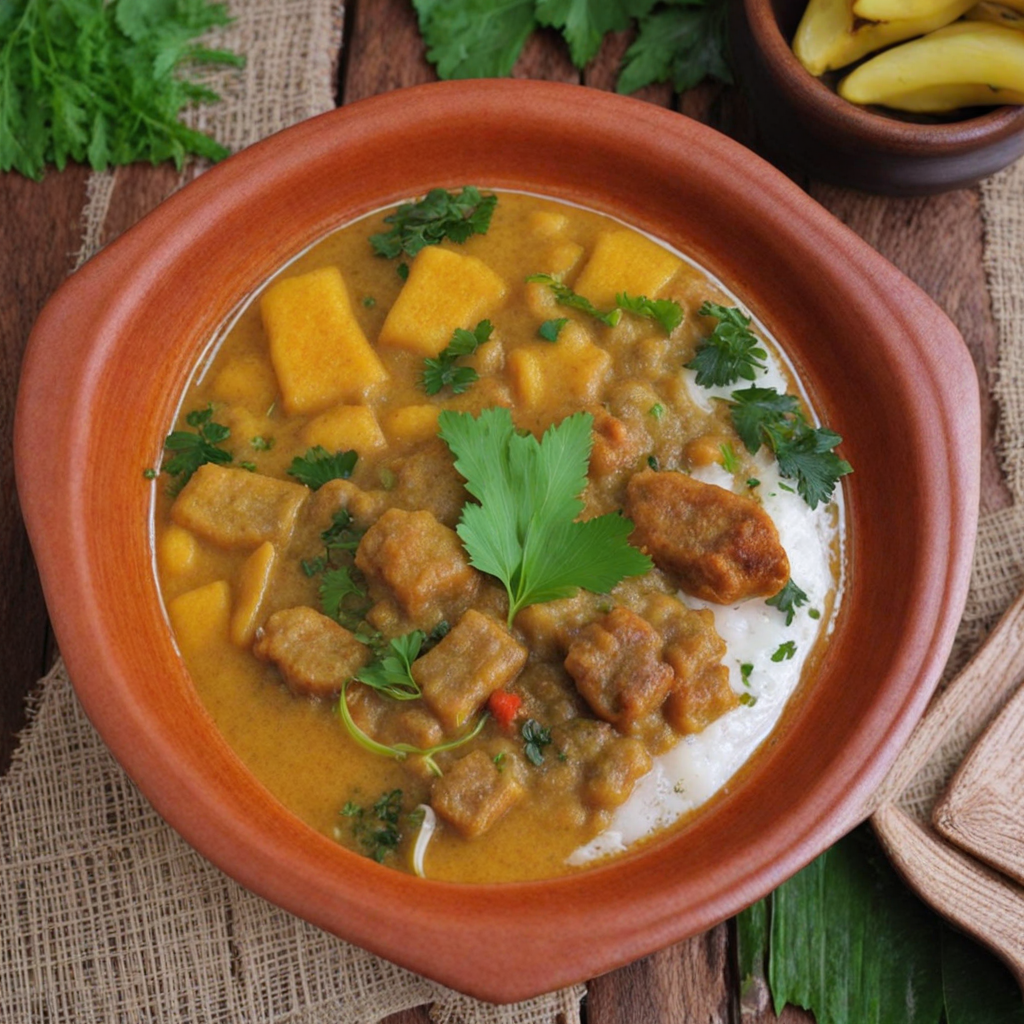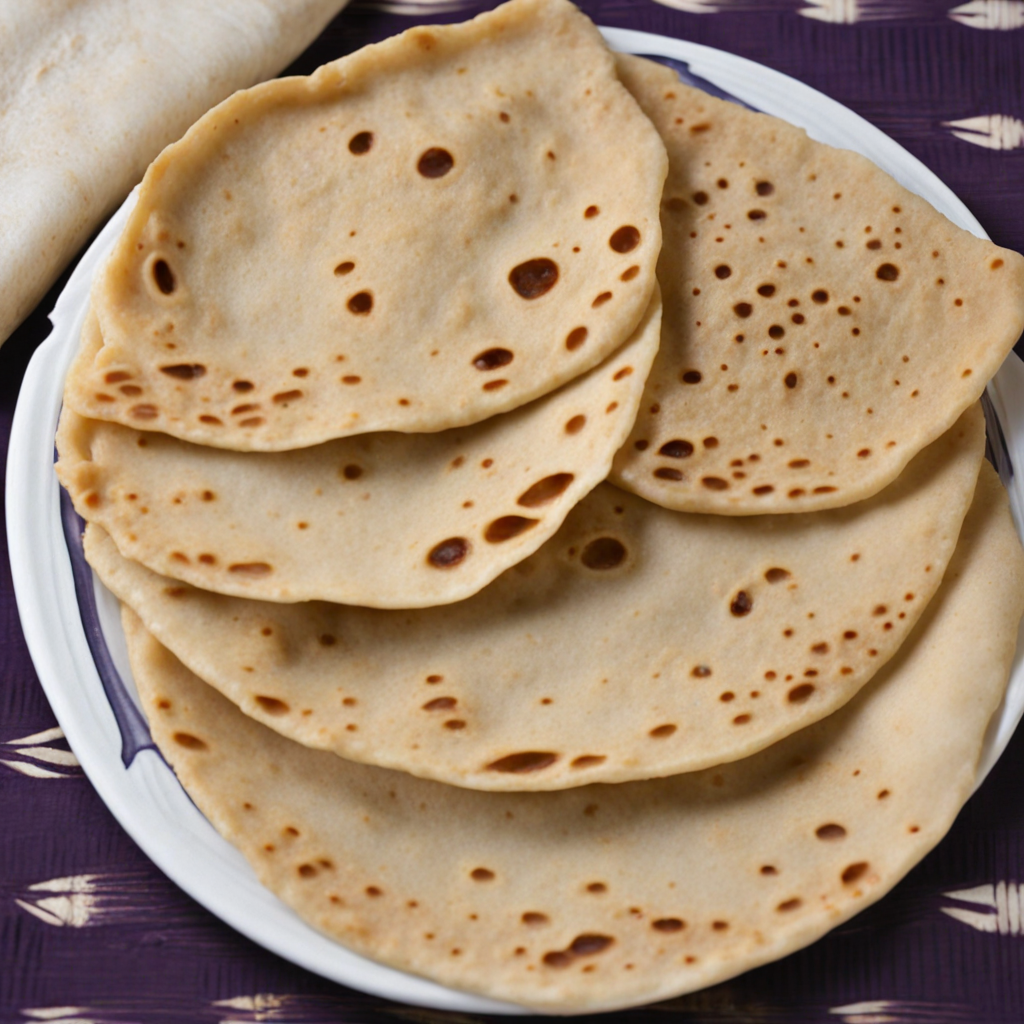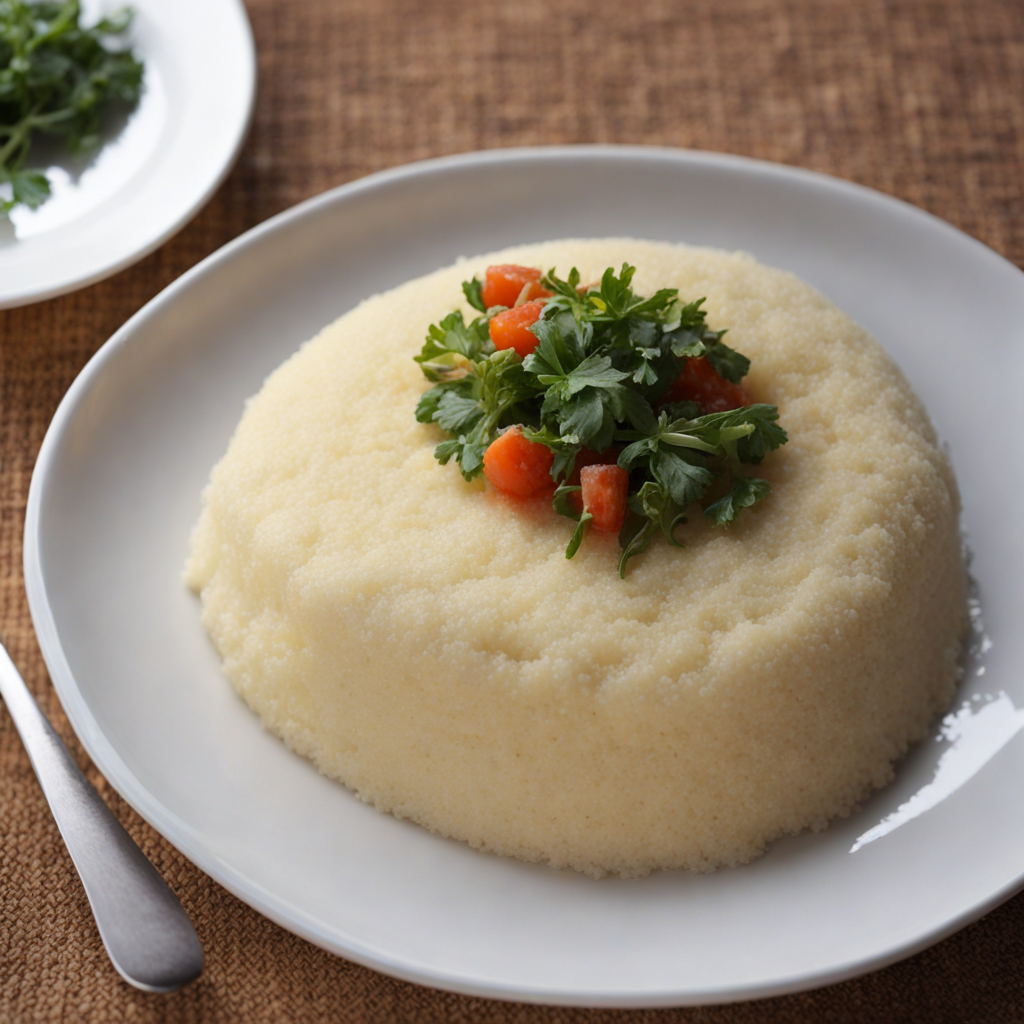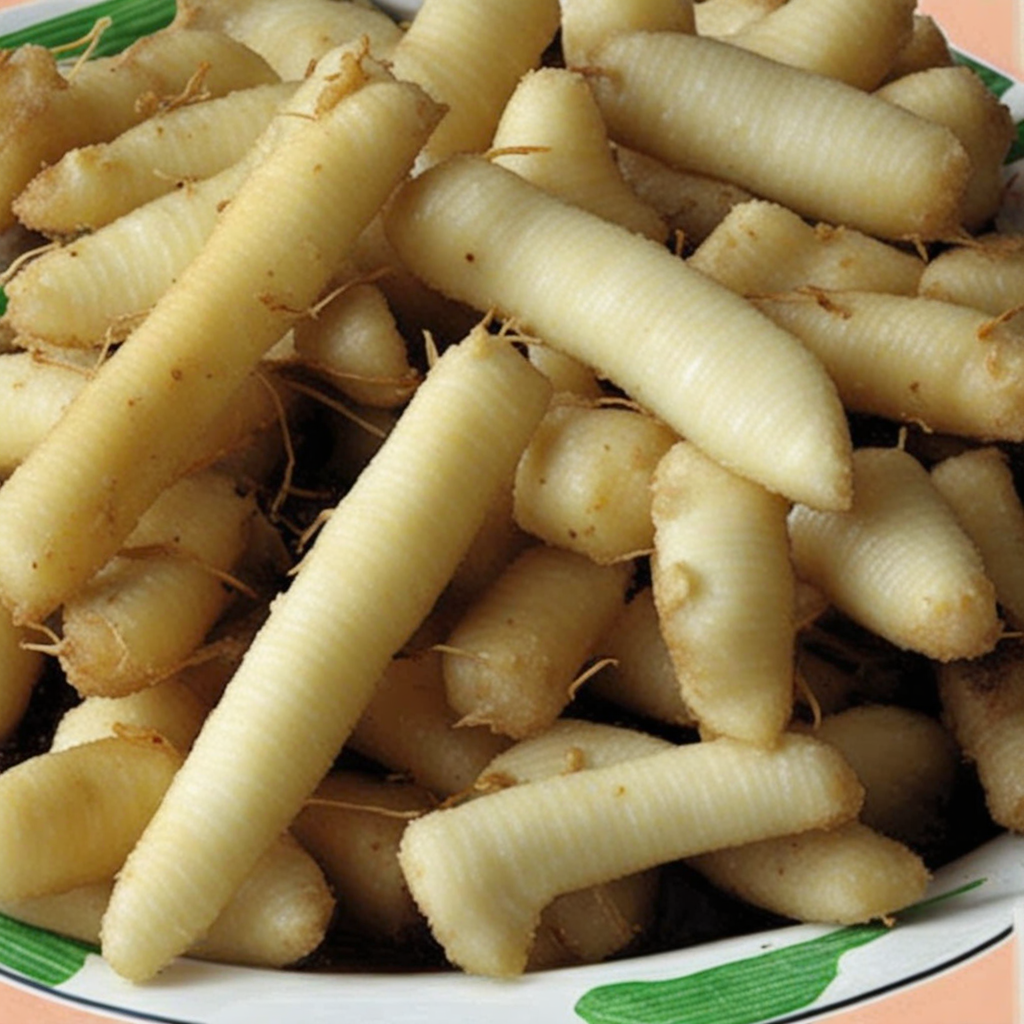Supu ya Ndizi
Supu ya Ndizi, a delightful Tanzanian dish, is a flavorful banana soup that captures the essence of East African cuisine. This dish is primarily made from ripe plantains, which are cooked until tender and then blended into a creamy, comforting base. The soup is often enriched with a variety of spices and herbs, including ginger and garlic, which add warmth and depth to the flavor profile. A touch of coconut milk is frequently incorporated, lending a rich and slightly sweet note that beautifully complements the earthiness of the bananas. In addition to the plantains, Supu ya Ndizi may include various vegetables such as onions, tomatoes, and leafy greens, which contribute vibrant colors and additional layers of taste. The dish is usually seasoned with salt and pepper, but some variations might introduce a hint of chili to provide a subtle kick. This combination of ingredients creates a harmonious balance between sweet and savory, making each spoonful a delightful experience. Supu ya Ndizi is not only a comforting meal but also a representation of communal dining in Tanzania. It is often served as a side dish alongside grilled meats or fish, allowing the flavors to meld together beautifully. Enjoying this dish is a journey into the heart of Tanzanian culture, where fresh, local ingredients and traditional cooking techniques come together to create a unique and memorable culinary experience.
How It Became This Dish
A Culinary Journey Through Supu ya Ndizi: The Banana Soup of Tanzania #### Origins Supu ya Ndizi, or banana soup, is a traditional dish that embodies the rich culinary heritage of Tanzania, a country located in East Africa known for its diverse cultures, languages, and landscapes. The origins of Supu ya Ndizi can be traced back to the indigenous communities of Tanzania, particularly the Chaga people who inhabit the slopes of Mount Kilimanjaro. This region has a long history of banana cultivation, which dates back over 2,000 years. Bananas are not only a staple food but also an integral part of the local economy and culture. The cultivation of bananas in Tanzania is believed to have been influenced by early migrations from Southeast Asia, where the fruit was first domesticated. Over time, bananas became a fundamental part of the Tanzanian diet, leading to the development of various dishes that highlight this versatile ingredient. Supu ya Ndizi emerged as a way to utilize overripe bananas, turning them into a nourishing soup that could sustain families, particularly during the rainy season when agricultural activities were often hampered. #### Ingredients and Preparation At its core, Supu ya Ndizi is made from ripe bananas, which are boiled and then mashed to create a smooth consistency. The soup is typically flavored with spices, such as ginger and garlic, and sometimes includes additional ingredients like coconut milk, vegetables, or meat, depending on regional variations and personal preferences. The use of coconut milk, for instance, reflects the coastal influence of Swahili cuisine, which has contributed to the evolution of many Tanzanian dishes. The preparation of Supu ya Ndizi is a communal affair, often bringing families and communities together. Traditionally, women would gather to prepare the soup, sharing stories and laughter as they worked. This communal aspect of cooking not only strengthens social bonds but also ensures that culinary traditions are passed down through generations. #### Cultural Significance Supu ya Ndizi holds significant cultural importance in Tanzania. It is more than just a dish; it represents the resilience and resourcefulness of the Tanzanian people. The ability to transform simple, locally available ingredients into a nourishing meal is a testament to the ingenuity of Tanzanian cuisine. In times of scarcity, such as during droughts or economic hardships, Supu ya Ndizi serves as a comforting reminder of home and heritage. The dish is also often served during communal gatherings, celebrations, and festivals, symbolizing unity and sharing. It is common to find Supu ya Ndizi at weddings, funerals, and other significant life events, reinforcing its role in communal identity. The soup is traditionally shared among family members and guests, emphasizing the importance of community and hospitality in Tanzanian culture. #### Development Over Time As Tanzania has evolved, so too has Supu ya Ndizi. The dish has adapted to the changing culinary landscape, influenced by globalization, migration, and the fusion of different cultures. In urban areas, where access to a wider variety of ingredients is more common, chefs have begun to experiment with Supu ya Ndizi, introducing elements from international cuisines. For instance, the incorporation of spices from Indian or Middle Eastern cuisines has added new dimensions to the traditional recipe, creating a unique blend that reflects Tanzania's multicultural society. Moreover, the rise of the farm-to-table movement has led to a renewed appreciation for locally sourced ingredients, including bananas. Many contemporary chefs in Tanzania are now focusing on sustainability and supporting local farmers, ensuring that the traditional preparation of Supu ya Ndizi remains relevant in today’s culinary scene. This has also sparked a resurgence of interest in traditional cooking techniques, as people seek to reconnect with their culinary roots. In rural areas, Supu ya Ndizi remains a staple, often prepared in its most traditional form. Farming families continue to grow and harvest bananas, ensuring that the dish retains its cultural significance and connection to the land. The soup is often made during family gatherings, reinforcing traditions and passing down knowledge about food preparation and agricultural practices. #### Supu ya Ndizi in the Global Context In recent years, there has been a growing interest in Tanzanian cuisine on the global stage. As more people travel to Tanzania and experience its diverse food culture, dishes like Supu ya Ndizi are gaining recognition beyond their regional confines. Food bloggers, chefs, and culinary enthusiasts are beginning to share their experiences with Tanzanian cuisine, highlighting the flavors and stories behind dishes like Supu ya Ndizi. This increased visibility has led to the dish being featured in international food festivals, cooking classes, and culinary events, promoting a greater understanding of Tanzanian culture and its culinary traditions. Supu ya Ndizi is now celebrated not only for its taste but also for its story—a narrative of resilience, community, and the power of food to connect people. #### Conclusion Supu ya Ndizi is more than just a comforting bowl of banana soup; it is a reflection of Tanzanian identity, a symbol of community, and a testament to the adaptability of traditional food in the face of modernization. As it continues to evolve, this dish will undoubtedly retain its cultural significance while embracing new influences and ideas. Whether enjoyed in a rural village or a bustling urban center, Supu ya Ndizi remains a cherished part of Tanzania’s culinary heritage, inviting everyone to savor its rich history and flavors. The legacy of Supu ya Ndizi will continue to thrive, reminding us of the importance of food in shaping our identities and connecting us across cultures and generations.
You may like
Discover local flavors from Tanzania


